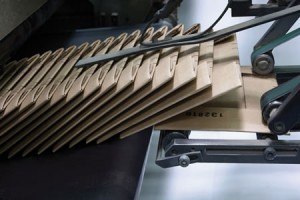Further reduction of CO2 footprint for corrugated packaging
 FEFCO has published new data used to calculate the environmental impact of corrugated packaging in its newest “European Database for Corrugated Board Life Cycle Studies”. The newest 2012 report is based on data both from the corrugated and the paper industry for the period from 2009 to 2011.
FEFCO has published new data used to calculate the environmental impact of corrugated packaging in its newest “European Database for Corrugated Board Life Cycle Studies”. The newest 2012 report is based on data both from the corrugated and the paper industry for the period from 2009 to 2011.
FEFCO have announced that a further decrease of the carbon footprint by 4.8% has been achieved over the past three years, on top of a reduction by 11,7% from 2006 to 2008. During the last three years, the average carbon footprint of corrugated was reduced from 784 kg/t to 746 kg/t. The main reason is a considerable drop in electricity usage, mainly due to the reduction of electricity bought by kraftliner producers. Pulp and paper mills with kraft cooking, as used by all kraftliner producers, have invested heavily the last four to five years on the energy conservation side of their processes. New big boilers for bark and other biofuels combined with steam turbines are used for electricity production.
The corrugated industry intensifies the use of recycled fibres for the production of corrugated packaging – the input of recycled paper into new corrugated increased from 82% in 2009 to 85% in 2012.
The corrugated industry and its suppliers continue exploring ways to reduce the environmental impact of their products. Corrugated packaging proves again to be a sustainable material, which is highly appreciated both by the supply chain and consumers. According to recent studies, consumers prefer paper-based packaging over other material. Corrugated is economical, can be 100% recycled and perfectly protects goods on their entire journey to the consumer.

































